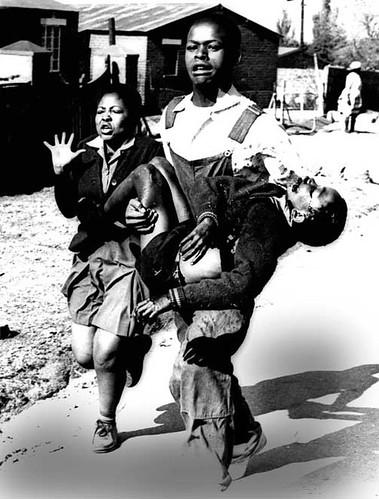Tasks: The Imam's Daughter by Shereen Pandit

This short story takes place during the apartheid era in South Africa. What do you know about this period in South African history?
- Why do you think there is a school boycott?
- The narrator of the story is the head teacher. How does she feel about her students? What does she think the students feel about her?
- She is expecting the SB (police). Why are they visiting the school? What do they expect her to do? How does she feel about this? (For more information about the SB, go to the box below)
- How would you describe Nadia? How do you think her experiences have formed her as a person?
- How would you describe the relationship between Nadia and the Head Teacher? Who's the teacher and the grown up in this relationship?
- What happens to the Head Teacher after the police visit? What do you think would have happened if Nadia hadn’t been there that day?
- Would you describe Nadia and the Head Teacher as static or dynamic characters? Give reasons for you answer.
- Who is the protagonist of the short story? Nadia or the Head Teacher?
- What would you say is the most important message in the short story?
Read these newspaper articles from 1980 and 1985 describing the school boycotts that were taking place at the time.
Sum up what you have learned in groups, or write short text:
Who were involved in the boycotts?
Why did the students carry out the boycotts?
Give examples of how Black and white students were treated differently.
How did the government and the police react to the boycotts?
Mention some of the short- and long-term consequences of the boycotts.
Link to: School boycott is erasing dreams in South Africa (1985)
Link to: Behind black school boycott in S. Africa: dissatisfaction with apartheid (1980).
Use the internet and find out more about the racially segregated educational system in South Africa during the apartheid era. Look for information about the following:
- What was the Bantu Educational Act of 1953?
- Who was Dr Hendrik F. Verwoerd, and what role did he play in the introduction of this new system?
- What was the aim of Bantu education?
- What were the main differences between the education that was offered to Black children and the education offered to white children? (Consider subjects, funding, and school equipment / buildings.)
- Have you heard of countries that have, or have had, systems similar to apartheid?

This iconic photo was taken during the Soweto uprising in 1976. It all started out as a peaceful student march, but it ended up as a blood bath.
Use the internet to find out more about the Soweto uprising. Look for information about the following:
- What was the cause of the Soweto uprising?
- What happened during the uprising?
- How many were killed and injured?
- How did the international community react to the uprising and to the killings.
- How did this event impact the struggle against apartheid?
Listen to the following BBC Sound programme about Bongi Mkhabela's memories of the Soweto protest. Then answer the questions below.
Link to BBC Sound: Witness History
- Describe Bongi Mkhabela's feelings when the police started to shoot.
- According to Bongi, why was it so important that Afrikaans was removed as the main educational language?
- How does she describe the planning and the start of the protest?
- What means of power did the police use to intimidate the students at the beginning of the march?
- What was the worst moment for Bongi? Why?
- In retrospect, how did she feel about their decision to carry out the march? Did she regret it? What did she learn from the experience?
- What kind of impact did the march have on the struggle against apartheid?
- What happened to Bongi after the march?
- In 'The Imam’s Daughter' there are several references to the importance of remembering our heroes. Write a text where you discuss the importance of not forgetting our history, our heroes, and what came before us. Use references from the short story and-/-or from history.
- During Apartheid, some of the most prominent activists were young people refusing to give in to a racist system of government. Write a text where you discuss the importance of youth activism and what young people can achieve if they are determined. Use relevant examples from other parts of the world.
Guoskevaš sisdoallu
This short story takes you back to the apartheid era in South Africa.